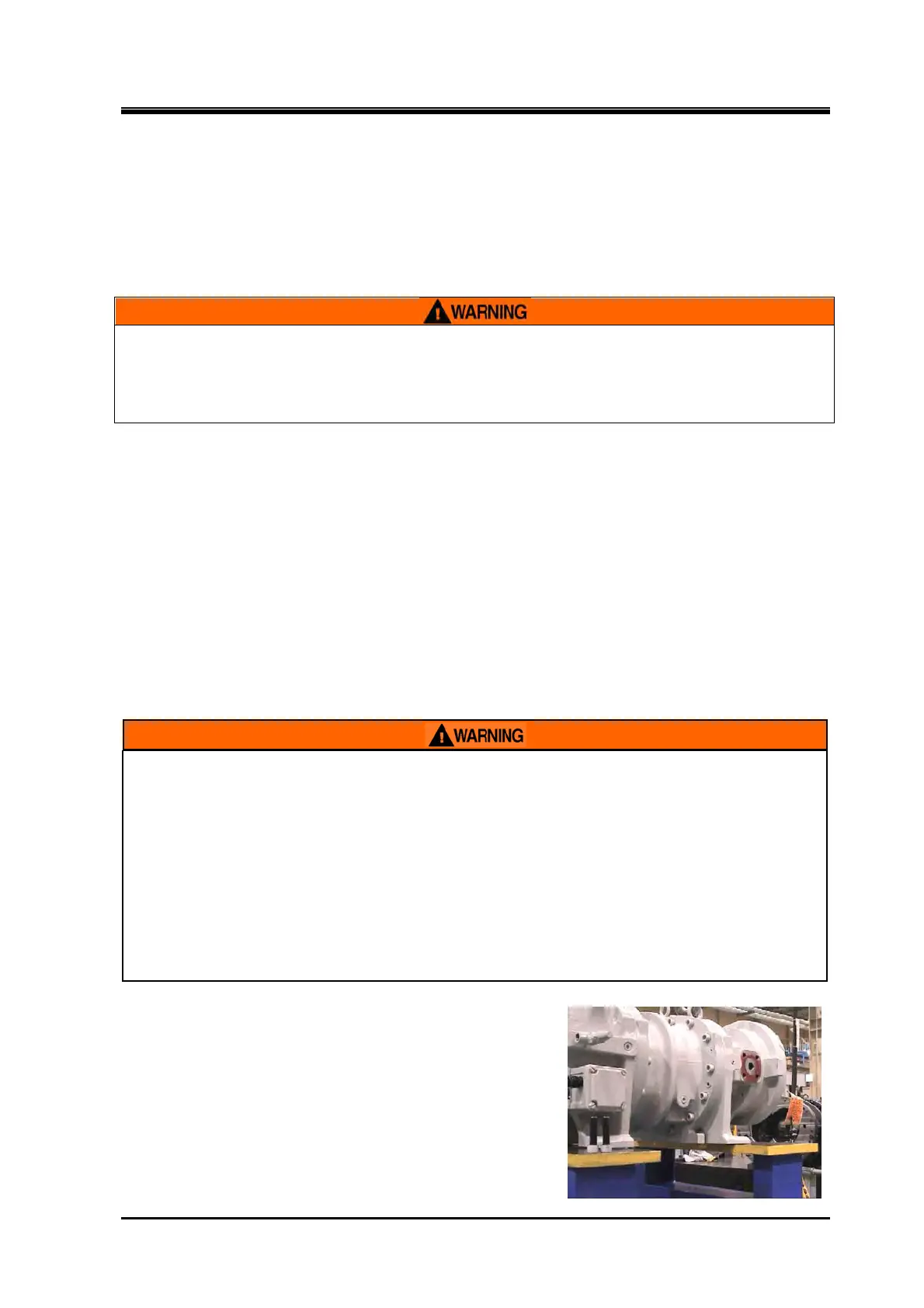2205B0JE-DA-J-N_2014.05.
5 Maintenance and Inspection
Screw Compressor J-series 5.4 Disassembly and Assembly of the Compressor
5-21
For either of the methods above, prepare a device flow sheet for the work, check the necessary valve
operation on the flow sheet and on the device, and specify valve operation and device/tube connection
on the flow sheet.
Prepare one flow sheet for the foreman and one for displaying in the work area.
Also, make a refrigerant recovery procedure showing the conditions of the workplace and make sure all
workers have read and understand it before starting the work.
Make sure that all risk assessment checks, including checking the work contents
and procedure, are implemented before starting work. Neglecting these checks
will lead to an increase in industrial accidents to a level that cannot be ignored.
Perform sufficient ventilation during the work.
5.4.4 Removing the Compressor
1. Turn off the main motor power.
2. Close the suction stop valve, discharge stop valve, and liquid supply stop valve.
3. Perform refrigerant disposed from the compressor. Maintain sufficient ventilation when working.
4. Open the capacity control solenoid valve and variable Vi solenoid valve manually, and dispose oil
and refrigerant inside the cylinder.
5. Turn off the control power.
6. Disconnect the Vi position sensor connector.
7. Remove the coils from the capacity control solenoid valve and variable Vi solenoid valve.
After turning off the motor main power, control power, and power for the other
equipments, always perform lockout/tagout to prevent any inadvertent operation
to turn on the equipment.
After closing the suction stop valve, discharge stop valve, and liquid supply stop
valve, always perform lockout/tagout to prevent any inadvertent opening of these
valves (lockout/tagout).
If there is residual high-pressure gas/refrigerant or oil dissolved in the
refrigerant, the gas and oil may blow off when closed valves (components) are
opened. This may result in injury such as frostbite and loss of vision. Always
check and confirm the pressure in the compressor, before opening any pipe
connections and valves.
8. Disconnect the pipe connections and remove the lug bolts
from the compressor base.
9. Pull out the parallel pin between motor spacer and
compressor, and remove the bolts.
10. Using lifting equipment, remove the compressor from the
motor spacer.
11. Put place the lifting compressor on a work bench like the
right photograph.
